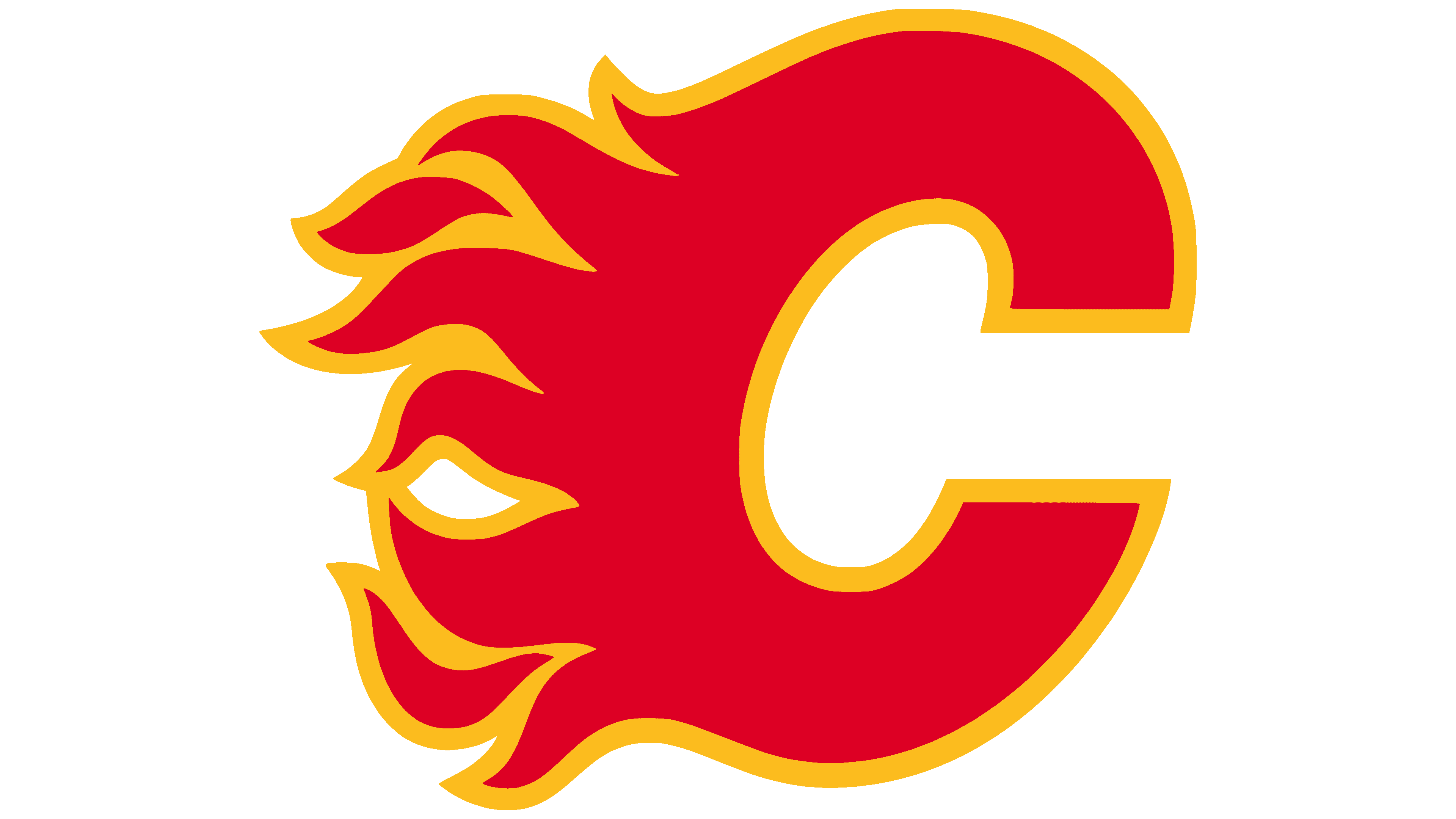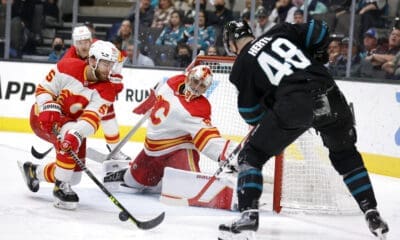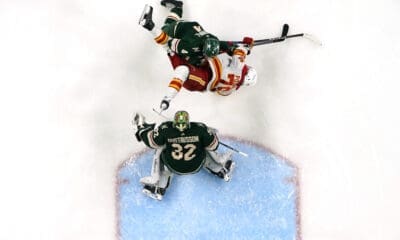Calgary Flames
What have the Flames done at past deadlines?
Can it help predict what Brad Treliving will do this time around?

It’s no secret when Hunting Season opens for Flames General Manager Brad Treliving. The second the NHL regular season ends, he identifies the areas he deems necessary to be changed, and acts accordingly. His most lucrative catches occur during draft day, when teams are willing to part with the present to grab the future. Treliving has never been super active at the deadline, however he has also never had a true contender to fortify. How have his past actions worked out? Can we use the comparables to predict his actions this year?
2015 Status: Sellers/Playoffs (Pacific 3)
Leading up to deadline:
-(F) Curtis Glencross to WSH for 2015 2nd round pick (Traded), 2015 3rd round pick (Traded)
-(D) David Schlemko off waivers from DAL
Deadline day:
-(F) Sven Baertschi to VAN for 2015 2nd round pick (53, Rasmus Andersson)
Analysis:
Treliving did exceptionally well at his first deadline. Despite the Flames being in solid (albeit surprising) playoff contention, the Flames were clearly sellers. Glencross had seen his ice time plummet with the emergence of rookies Johnny Gaudreau, Josh Jooris, and Michael Ferland. He waived his no-trade clause, and was dealt to the Washington Capitals. The 2nd round pick was used as part of the package to acquire 23-year-old Dougie Hamilton from Boston. The 3rd round pick was packaged to acquire the last pick of the 2nd round, which was used to draft Oliver Kylington 60th overall.
Sven Baertschi could never seem to find the form he displayed in his first games with the Flames. A 2nd round pick was a very good return for a middling-NHLer. It ended even better considering it was used to draft Swedish defenceman Rasmus Andersson.
Given that both Kylington and Andersson have made the NHL, and currently form the rookie 3rd pairing, both these trades benefited the Flames long-term. Glencross has been out of the league since the end of that season, while Baerstchi has finally found consistency in Vancouver. The other pick from the Glencross deal continued along the trade tree that has ended with the Flames acquiring Noah Hanifin and Elias Lindholm this past summer.
What would the Flames have done at the deadline had they known star defenceman Mark Giordano was out for the year with a torn bicep? Schlemko was free depth while management awaited word on his injury. He was a solid third pairing guy for the team, and who could forget that shootout goal?
2016 Status: Sellers/No playoffs
Leading up to deadline:
-(F) Markus Granlund to VAN for (F) Hunter Shinkaruk
-(F) Jiri Hudler to FLA for 2016 2nd Round Pick (54, Tyler Parsons), 2018 4th Round Pick (108, Demetrios Koumontzis)
Deadline day:
-(D) Kris Russell to DAL for (D) Jyrki Jokipakka, (F) Brett Pollock, 2016 2nd Round Pick (56, Dillon Dube)
-(F) David Jones to MIN for (G) Niklas Backstrom, 2016 6th Round Pick (166, Matthew Phillips)
Analysis:
All the factors that should have kept the Flames out of the playoffs the previous year came to full bloom during the 2015-16 season. A shallow d-corps, an offence that consisted of a single line, and horrendous goaltending all lead to the Flames earning a top 10 pick. The outcome of this ended up being a blessing in disguise for the rebuilding Flames, who were able to deal their UFA’s at the deadline.
Markus Granlund was a bottom six forward in the organization, and Treliving leapt at the chance to trade him for a prospect. Then 21-year-old Hunter Shinkaruk was a 2nd year pro who had put up 21 goals in 45 games with the Utica Comets, and the trade looked like an absolute steal. Shinkaruk continued that hype at the end of the season, putting up 2 goals in 7 games with Calgary. However, he would only play 7 more games the following season before being dealt almost 2 years later to Montreal. Granlund has found reasonable success in the Canucks bottom 6.
Jiri Hudler, who had found so much success with rookie Johnny Gaudreau, had seen his point totals dip from 76 to just 35 in 53 games. Treliving wisely dealt the pending UFA to the Florida Panthers, for 2 draft picks. The 2016 2nd round was used to take Tyler Parsons, who is currently the Flames most promising goaltending prospect. Denver freshman Demetrios Koumontzis was taken this past summer by the Flames in the 4th round. Hudler meanwhile, has been out of the league since 2017.
Kris Russell was the Flames most valuable trade chip, as he was one of the only defencemen on the market. The return was excellent at the time, although it hasn’t panned out long term. Jyrki Jokipakka was a 24 year old defenceman, who was already an NHL regular. We’ll come back to him soon. Brett Pollock was a 2014 2nd round pick, who is quickly seeing his time expire as a prospect in the Flames organization. The best return was the 2nd round pick (could have been a 1st round pick had the Stars made the Conference finals), which was used to select Dillon Dube. Russell is now part of something Edmonton management claim is an NHL caliber defence corps.
Niklas Backstrom was a fun story line in the end of a miserable season, and got to end his career on a high note in the flaming C. The 6th round pick was the compensation for unloading Backstrom from the Wild. Treliving struck potential gold in Matthew Phillips, a diminutive but promising prospect. David Jones never played in the NHL after 2016.
2017 Status: Buyers/Playoffs (Wildcard 1)
Leading up to deadline:
-2017 3rd round pick, 2018 5th round pick to ARZ for (D) Michael Stone
Deadline day:
-(D) Jyrki Jokipakka, 2017 2nd round pick to OTT for (F) Curtis Lazar, (D) Mike Kostka
Analysis:
In the Flames first year of true playoff contention, Treliving had his first shot at being a playoff buyer and it not go well.
A 3rd round pick as a rental price for Michael Stone was actually a very good trade. Stone replaced Dennis Wideman on the Flames second pairing, and gave the Flames a solid top 4 entering the playoffs. That defensive solidification helped extend the Flames record 10 game win streak, a large reason why they even made the playoffs that year. However, because the Flames re-signed Stone (to an ugly contract at that), the Coyotes also received a 5th round pick. Stone has been limited to only 11 games this season due to blood clots that could jeopardize his career.
The other trade was much uglier. Jokipakka was dealt out of Calgary just one year after they acquired him, after failing to regularly crack the top 3 pairings. Mike Kostka was a pending UFA, and served as nothing more than a salary dump (apparently a 2nd round pick wasn’t enough). Curtis Lazar was the main target of this trade, a grinding winger who had yet to duplicate his relative rookie success in Ottawa. The Flames gave up a 2nd round pick, with which the Senators selected Alex Formenton, one of the NHL’s top prospects. Lazar was placed on waivers to start the season, and has yet to be summoned from AHL Stockton.
2018 Status: Neither/No playoffs
Leading up to deadline:
-N/A
Deadline day:
-2018 7th Round Pick to OTT for (F) Nick Shore
-(F) Chris Stewart off waivers from MIN
Analysis:
Not much to see here. With TJ Brodie, Sean Monahan, Matthew Tkachuk and others missing significant time to end the season, the Flames simply needed NHL bodies to round out the year. This was evident with the Flames choosing to resign neither player. The Flames also had a severe lack of assets after the Mike Smith and Travis Hamonic trades.
So what does it mean for the Flames this deadline day? Well the facts show that Treliving has had much more experience and success being in the selling position. The cost of the overpays in 2017 have cost the Flames in the long term, while barely helping at the time they were needed.
Will the Flames learn from previous mistakes and come out of the deadline with their roster intact? Or will they try to create new fortunes by claiming one of the tantalizing big names available this year?
by Gordie Taylor








